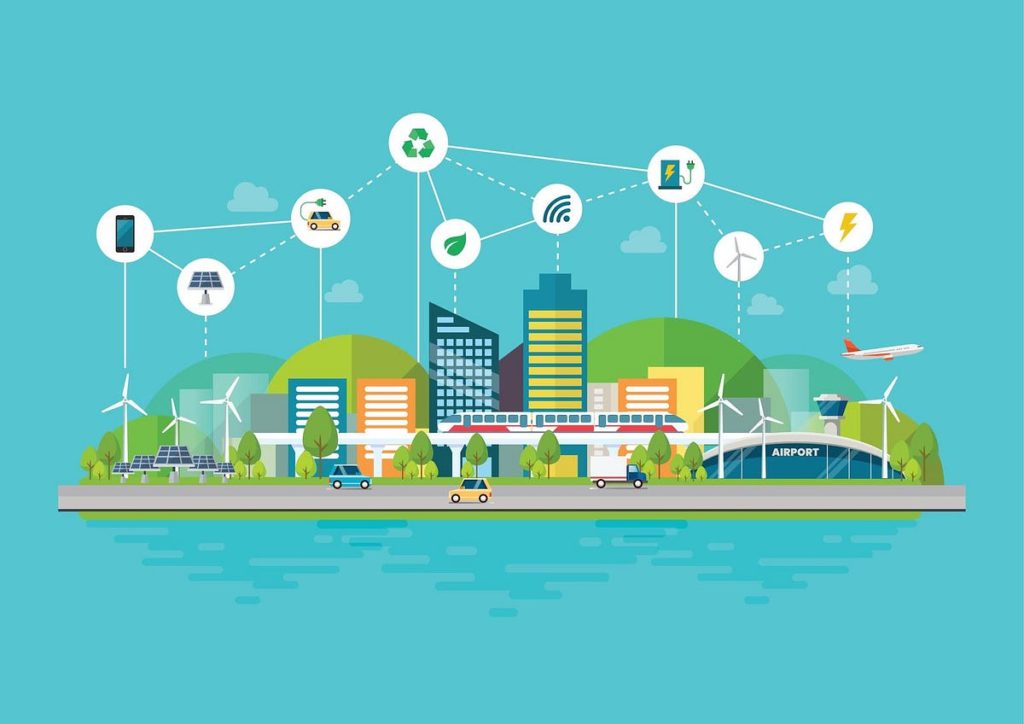Introduction
The real estate industry in the U.S. is undergoing a significant transformation as sustainability becomes a central focus for developers, investors, and homebuyers. With growing concerns over climate change, resource conservation, and energy efficiency, the future of sustainable real estate is set to reshape how properties are designed, built, and maintained. This article explores key trends and innovations driving the shift towards sustainable real estate in the U.S.
1. Green Building Standards and Certifications
One of the most visible trends in sustainable real estate is the adoption of green building standards. Certifications such as LEED (Leadership in Energy and Environmental Design) and ENERGY STAR® are becoming industry benchmarks for sustainable construction. These certifications ensure that buildings meet stringent environmental criteria, including energy efficiency, water conservation, and the use of sustainable materials.
- Impact: Properties that meet green building standards are more energy-efficient, reducing utility costs for owners and tenants while minimizing the environmental footprint.
- Future Outlook: Expect wider adoption of these certifications as developers and investors prioritize sustainability in both residential and commercial properties.
2. Energy-Efficient Technologies
The integration of energy-efficient technologies is playing a pivotal role in shaping the future of sustainable real estate. Solar panels, smart thermostats, and energy-efficient lighting systems are becoming more common in new developments. Homes and buildings are increasingly equipped with systems designed to reduce energy consumption and promote renewable energy use.
- Key Technologies:
- Solar Energy: Many new buildings are incorporating solar panels to harness renewable energy, reducing reliance on traditional power grids.
- Smart Home Systems: Advanced technology allows homeowners to monitor and control energy use, optimizing heating, cooling, and electricity consumption.
3. Sustainable Materials and Construction Practices
Sustainable construction practices are on the rise as builders seek eco-friendly materials that reduce environmental impact. Using recycled materials, low-emission products, and locally sourced supplies helps minimize the carbon footprint of new developments.
- Sustainable Materials:
- Recycled Steel and Wood: These materials lower the demand for new resources and reduce waste in the construction process.
- Bamboo: A fast-growing, renewable resource, bamboo is gaining popularity as an eco-friendly alternative to traditional wood.
4. Water Conservation and Management
Water conservation is becoming an essential part of sustainable real estate, especially in drought-prone areas of the U.S. New properties are incorporating systems designed to reduce water usage and manage waste efficiently.
- Technologies and Strategies:
- Low-Flow Fixtures: Homes and buildings now feature low-flow toilets, faucets, and showerheads to conserve water.
- Rainwater Harvesting: Some properties use rainwater collection systems to supplement water needs for landscaping and other non-drinking purposes.
5. Resilient and Climate-Adaptive Design
With climate change bringing more extreme weather events, resilient and adaptive design is a growing priority in sustainable real estate. Developers are focusing on building structures that can withstand floods, hurricanes, and wildfires, while also incorporating features like stormwater management and heat-resistant roofing.
- Future Buildings:
- Elevated Foundations: In flood-prone areas, homes are being designed with elevated foundations to reduce the risk of water damage.
- Fire-Resistant Materials: In wildfire-prone regions, builders are using fire-resistant materials such as metal roofs and concrete siding to increase safety.
6. Urban Planning and Mixed-Use Developments
The future of sustainable real estate also lies in how cities are designed. Urban planning is evolving to create mixed-use developments that reduce the need for long commutes and promote walkable, community-oriented spaces. These developments integrate residential, commercial, and recreational areas, reducing the dependence on cars and encouraging public transportation.
- Impact: Mixed-use developments reduce energy consumption and promote healthier, more connected communities.
- Future Trend: Expect to see more urban developments focused on sustainability, with green spaces, efficient public transit, and energy-efficient infrastructure.
Conclusion
The future of sustainable real estate in the U.S. is bright, driven by innovation and a growing commitment to environmental responsibility. From energy-efficient technologies and green building certifications to resilient designs and sustainable urban planning, the real estate market is evolving to meet the challenges of climate change and resource conservation. As sustainability becomes a top priority for both developers and buyers, the industry will continue to see transformative growth that benefits both people and the planet.

